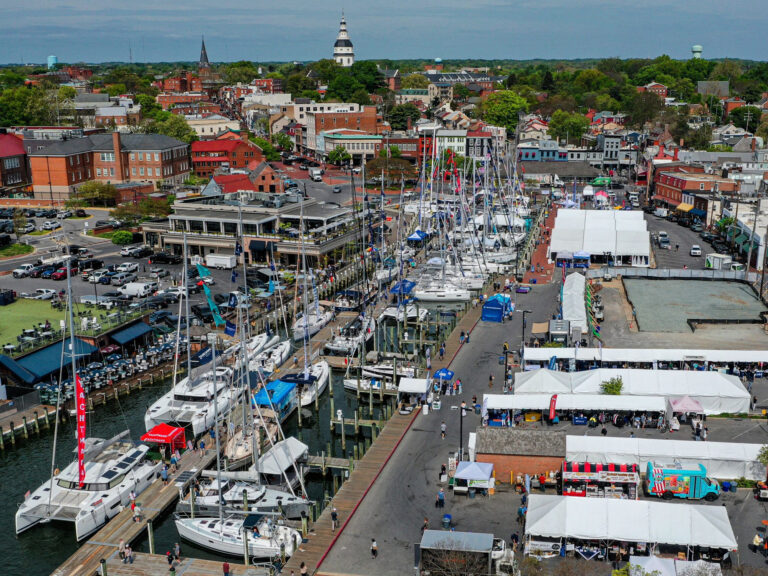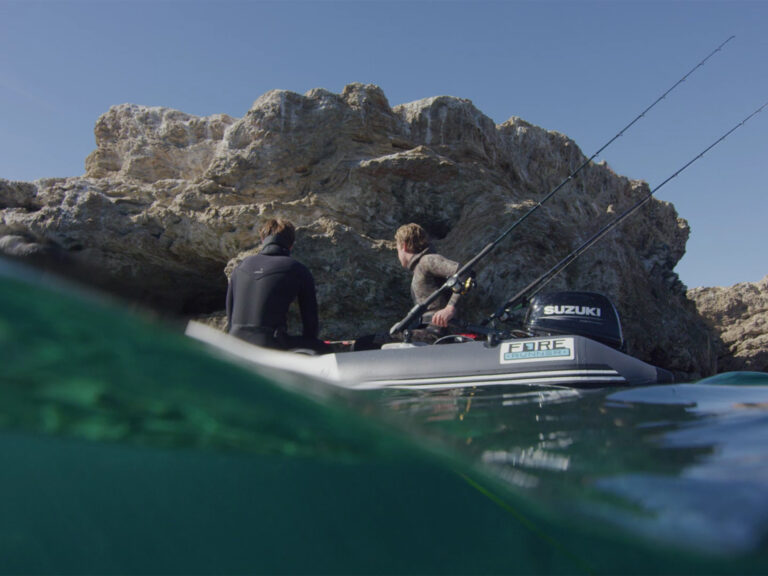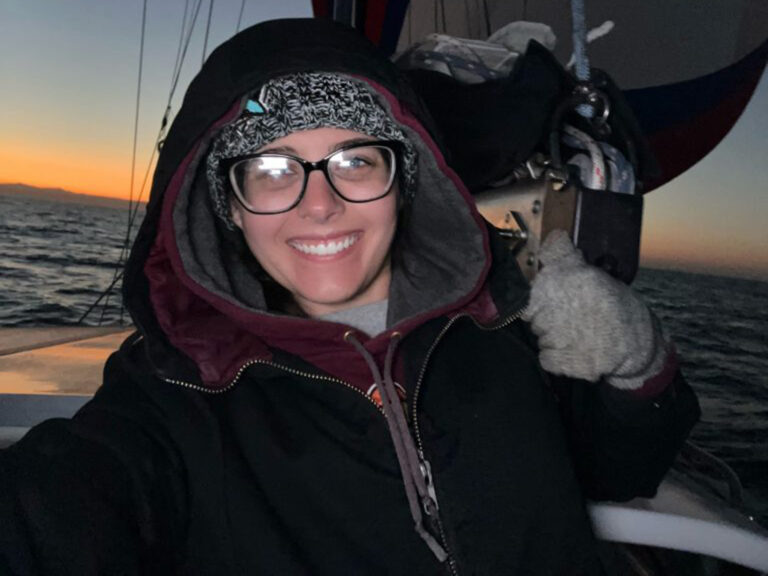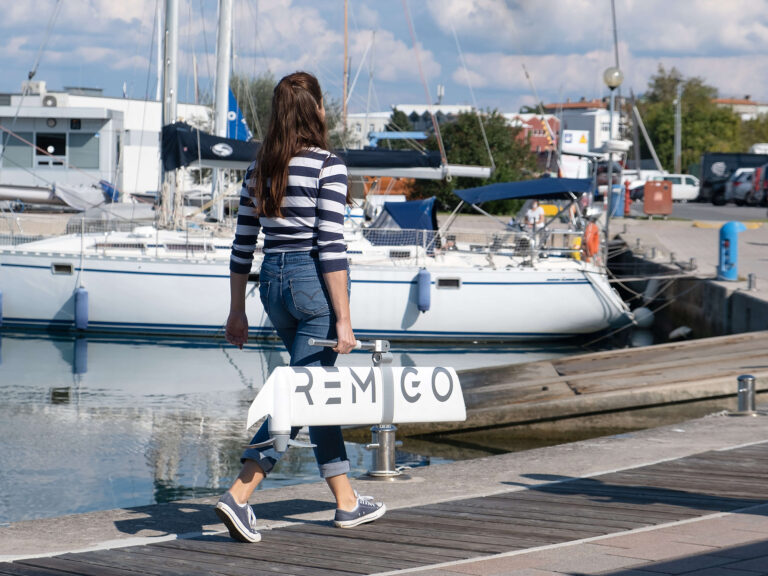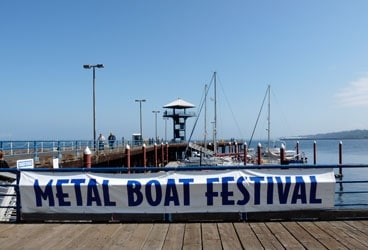
metal boat fest 368
An icy, gusty wind blowing from the snow-covered Olympic Peninsula discouraged many sailors from arriving by boat for last summer’s Metal Boat Festival, but there was still a good representation around us at the dock where free moorage was provided. Held at the Red Lion Hotel in Port Angeles, Washington, the gathering, put on by the Metal Boat Society, attracted over 80 participants for three days of seminars and nightly social events.
The non-profit society serves as a resource for the building, maintaining, restoring, and repairing of metal boats and facilitates communication and support through its website (www.metalboatsociety.org), the society’s publication, Metal Boat Quarterly, and the annual festival. I was delighted to be invited to be last year’s keynote speaker. It can be tricky when one doesn’t fit the profile-we don’t sail a metal boat-but I knew from previous experience that this crowd would be accepting and fun. They’re also an intriguing and analytical group, some dedicating decades to building their boats.
Society president Candy Larreau and her many helpers couldn’t have been more welcoming, and we learned much about metal boats and the enthusiasm, tenacity, and diversity of their owners. In the mix of “dreamers,” “doers,” and veterans known as “doners,” there was a wide variety of ages, backgrounds, and boat designs but no disparity on why they wanted a metal boat: To a person, they all felt metal made for much stronger and safer vessels.
After meeting on a blind date at a county fair, Candy and husband, Randy, owned small fishing boats, then started sailing in 1995 after their children had grown. With six kids and now 27 grandchildren, life on the home front was, and still is, busy. At first, Candy worried when their 30-foot fiberglass Lancer heeled, but “when the sails were trimmed,” she grew to love the “speed, tipping and all” along with the lifestyle, and soon she embraced the idea of retirement cruising. Formerly general contractors, Candy and Randy are now building a steel-hulled 40-foot Brent Swain design in their yard. They read about the design in an article, felt it was ideal for their long-term cruising plans, and knew they had the skills to build it. They chose a bilge-keeled design so they can beach the boat at low tide to clean the bottom. And it’ll also make it easy to get the grandkids ashore. After nearly seven years, the goal is in sight to set sail on a shakedown cruise to Alaska, then south to Mexico and around North America and South America. Now they advise others that building a boat yourself is rewarding, but it takes time, and it’s easy to get diverted.
Newcomers to the Metal Boat Society were Norbert and Trudi Janssen on C’est si Bon, who came in their 42-foot steel sloop built by Feltz in Germany in 1988. We met them on the western coast of Vancouver Island last summer when we were both holed up for a storm. Fortunately, we could still set our shrimp traps, and we bonded over many a feast together. The Janssens met skating in a park in Amsterdam in the winter, and they sailed Dutch barges together in the summer. After emigrating to Australia, they sailed an 18-foot trailer-sailer for 12 years and raced dinghies. They found their current boat for offshore cruising in an estate sale and are only the second owners. Having grown up in wood-and-steel boats, they like their feeling of security and strength. Norbert, a former manufacturing engineer, and Trudi, who worked as a teacher, have kept the boat immaculate, despite logging many ocean miles from Australia to Alaska via Japan, and they were a wonderful source of practical information at the festival. In the women’s session, Trudi mentioned that no standard seasickness medications, such as Stugeron (cinnarizine) or scopolamine patches, cured her symptoms, and she said that they almost had to end their plans before she found medication-a mix of an antihistamine, scopolamine, and caffeine-that worked. All are available online. Their future plans are to head for Mexico and beyond.
We were delighted when we saw Jim Whittaker and Diane Roberts arriving on the dock. We’d met them in Cabo San Lucas, Mexico, in 1997 when they were beginning to cruise offshore on their Roberts-designed 53-footer, Impossible, with their two sons. My husband, Andy, was running Mustang, an 85-foot Camper and Nicholson sloop, at the time, and our youngest son, Jamie, and I were visiting. As usual, the two boats with similarly aged kids became close. Although the hull was built in Alaska of steel, Impossible’s interior was completed by Admiral Marine in Port Townsend-including a special drawer for an electric piano. After a freak, 80-knot storm in Cabo in which other boats were badly damaged and even sunk but Impossible sustained only two small dents, they decided that it was a safe enough boat in which to take their children offshore.
Before setting sail for the long haul, they gained considerable experience, including skills acquired through offshore racing. The couple had met when they worked for American and Canadian park boards, and both are renowned mountaineers. Jim’s account of climbing Everest in near survival conditions in 1963, becoming the first American to summit the mountain, is something we’ll never forget. They cruised on Impossible for four years. In their festival presentation, Jim said, “We were going to go around the world-but it was so nice in the South Pacific.” Diane added, “We had wonderful moments every day, every passage, and the boys didn’t have time to be bored. In fact, two weeks after we got home, our son Leif bought a boat. But that’s not to say there weren’t some challenges!” Impossible has now been sold, and Whittaker and Roberts have an aluminum powercat, which is ideal for cruising around Puget Sound and the San Juan Islands, and it maintains their metal-boat theme.
One of the youngest couples present, Steve and Marie Hoiland, also sailed to the event. They’d decided on a steel 38-foot Cumulant, built in Holland by Harlinger, for their long-term plans.
Steve, a fiber-optic technician, and Marie, a flight attendant, met when she needed a ride to her car mechanic. They’ve now been married 18 years. Marie points out that she gained not only a husband but also a good mechanic!
Having thoroughly enjoyed cruising aboard their 25-foot Westerly, Saben, up to Alaska-including coping with the trauma of being caught out unexpectedly in strong winds-they agreed that it would be fun to go farther afield. At a night-school class, Marie wrote a paper, “How to Retire Early,” in which she worked out all the numbers, estimating how much they could save, what boat they could afford, and drafting a realistic cruising budget.
Saben was bought from a couple cruising in the Bahamas and trucked from Florida to the Pacific Northwest.
Steve retired a year ago, and the plan had been to leave for Mexico two weeks before the festival, but Marie told me that she “chickened out.” But as we were all saying our final good-byes as the Metal Boat Festival drew to a close, Marie gave me an update, which she delivered with a beaming smile: “It’s given me so much confidence being here! I’m again inspired, and we will definitely go cruising next year.”
Liza Copeland, the author of four books on cruising, has sailed countless offshore miles with her family aboard their non-metal Beneteau 47, Bagheera.




